
William Clement Ley (6 July 1840 - 22 April 1896) was an English clergyman and pioneer meteorologist who studied clouds and examined their dynamics and use in weather forecasting.

William Clement Ley (6 July 1840 - 22 April 1896) was an English clergyman and pioneer meteorologist who studied clouds and examined their dynamics and use in weather forecasting.
Ley was born in Bristol to William Henry Ley who was a headmaster at Hereford Cathedral School. He studied classics at Magdalen College in Oxford and graduated with a BA First Class in 1862 and an MA in 1864. He took an interest in meteorology and became Vice President of the University Meteorological Society.
Ley was ordained in 1863 serving in Herefordshire before becoming rector of Ashby Parva, Leicestershire in 1874. In 1873 he was elected a Fellow of the Meterorological Society and published a number of researches in the Quarterly Journal of the Royal Meteorological Society. [1] [2]
Ley's major contribution was his book on the clouds titled Cloudland: A study on the structure and characters of clouds (1894). [3] He examined how cloud formations were related to the weather and examined the value of cloud observation in forecasting weather. He was possibly the first to examine upper air circulations and their relation to air flow in lower altitudes. He studied cirrus drifts and examined what are now termed as jet streams. [4] [1]
He married Elizabeth in 1866 and they had eight children. He resigned from his clerical position in 1892 and died in 1896, two years after the death of his wife. [1]
His work was largely ignored until his ideas were rediscovered 40 years later. [5]

Meteorology is a branch of the atmospheric sciences, with a major focus on weather forecasting. The study of meteorology dates back millennia, though significant progress in meteorology did not begin until the 18th century. The 19th century saw modest progress in the field after weather observation networks were formed across broad regions. Prior attempts at prediction of weather depended on historical data. It was not until after the elucidation of the laws of physics and more particularly, the development of the computer, allowing for the automated solution of a great many equations that model the weather, in the latter half of the 20th century that significant breakthroughs in weather forecasting were achieved. An important branch of weather forecasting is marine weather forecasting as it relates to maritime and coastal safety, in which weather effects also include atmospheric interactions with large bodies of water.

A meteorologist is a scientist who studies and works in the field of meteorology. Those who study meteorological phenomena are meteorologists in research, while those using mathematical models and knowledge to prepare daily weather forecasts are called weather forecasters or operational meteorologists.
The timeline of meteorology contains events of scientific and technological advancements in the area of atmospheric sciences. The most notable advancements in observational meteorology, weather forecasting, climatology, atmospheric chemistry, and atmospheric physics are listed chronologically. Some historical weather events are included that mark time periods where advancements were made, or even that sparked policy change.

Carl-Gustaf Arvid Rossby was a Swedish-born American meteorologist who first explained the large-scale motions of the atmosphere in terms of fluid mechanics. He identified and characterized both the jet stream and the long waves in the westerlies that were later named Rossby waves.
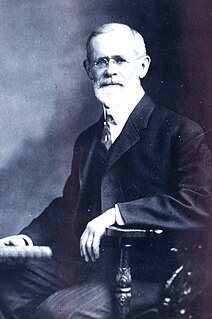
Cleveland Abbe was an American meteorologist and advocate of time zones.

James Pollard Espy was a U.S. meteorologist. Espy developed a convection theory of storms, explaining it in 1836 before the American Philosophical Society and in 1840 before the French Académie des Sciences and the British Royal Society. His theory was published in 1840 as The Philosophy of Storms. He became meteorologist to the War (1842) and Navy (1848) departments and developed the use of the telegraph in assembling weather observation data by which he studied the progress of storms and laid the basis for scientific weather forecasting.

The Royal Meteorological Society is a long-established institution that promotes academic and public engagement in weather and climate science. Fellows of the Society must possess relevant qualifications, but Associate Fellows can be lay enthusiasts. Its Quarterly Journal is one of the world's leading sources of original research in the atmospheric sciences. The Chief Executive Officer is Liz Bentley.
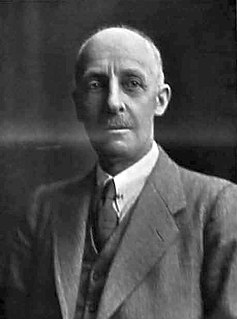
Sir Gilbert Thomas Walker was an English physicist and statistician of the 20th century. Walker studied mathematics and applied it to a variety of fields including aerodynamics, electromagnetism and the analysis of time-series data before taking up a teaching position at the University of Cambridge. Although he had no experience in meteorology, he was recruited for a post in the Indian Meteorological Department where he worked on statistical approaches to predict the monsoons. He developed the methods in the analysis of time-series data that are now called the Yule-Walker equations. He is known for his groundbreaking description of the Southern Oscillation, a major phenomenon of global climate, and for discovering what is named after him as the Walker circulation, and for greatly advancing the study of climate in general. He was also instrumental in aiding the early career of the Indian mathematical prodigy, Srinivasa Ramanujan.
Reginald Hawthorn Hooker English civil servant, statistician and meteorologist. Hooker was a pioneer in the application of correlation analysis to economics and agricultural meteorology.

Henry Francis Blanford was a British meteorologist and palaeontologist who worked in India. He was a younger brother of the naturalist William Thomas Blanford, both of whom joined the Geological Survey of India in 1855. Henry was the first official meteorologist in India, appointed as Imperial Meteorological Reporter in 1875.
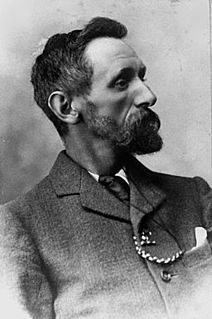
Clement Lindley Wragge was a meteorologist born in Stourbridge, Worcestershire, England, but moved to Oakamoor, Staffordshire as a child. He set up the Wragge Museum in Stafford following a trip around the world. He was a Fellow of the Royal Geographical Society and in 1879 was elected Fellow of the Royal Meteorological Society in London. To the end of his life, he was interested in Theosophy and spiritualism. During his tour of India he met with Mirza Ghulam Ahmad of Qadian, the founder of the Ahmadiyya movement in Islam who had claimed to be the Mahdi, the messianic redeemer awaited by Muslims. Sir Arthur Conan Doyle sought him out in New Zealand to ask for his views on spiritualism before writing The Wanderings of a Spiritualist in 1921. After training in law, Wragge became a meteorologist, his accomplishments in the field including winning the Scottish Meteorological Society's Gold Medal and years later starting the trend of using people's names for cyclones. He travelled widely, giving lectures in London and India, and in his later years was an authority on Australia, India and the Pacific Islands.
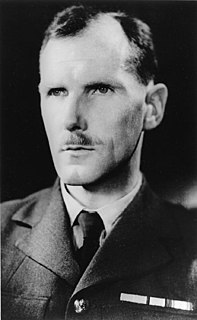
Group Captain James Martin Stagg, was a Met Office meteorologist attached to the Royal Air Force during Second World War who notably persuaded General Dwight D. Eisenhower to change the date of the Allied invasion of Europe from 5 to 6 June 1944.

A sting jet is a meteorological phenomenon which has been postulated to cause some of the most damaging winds in extratropical cyclones, developing according to the Shapiro-Keyser model of oceanic cyclones.

The following outline is provided as an overview of and topical guide to the field of Meteorology.
A cloud atlas is a pictorial key to the nomenclature of clouds. Early cloud atlases were an important element in the training of meteorologists and in weather forecasting, and the author of a 1923 atlas stated that "increasing use of the air as a means of transportation will require and lead to a detailed knowledge of all the secrets of cloud building."

The International Cloud Atlas or simply the Cloud Atlas, is a cloud atlas that was first published in 1896 and has remained in print since. Its initial purposes included aiding the training of meteorologists and promoting more consistent use of vocabulary describing clouds, which were both important for early weather forecasting. The first edition featured color plates of color photographs, then still a very new technology, but noted for being expensive. Numerous later editions have been published.
Robert Atherton Edwin, was a noted meteorologist and weather forecaster who was instrumental in the establishment of the New Zealand Meteorological Office.
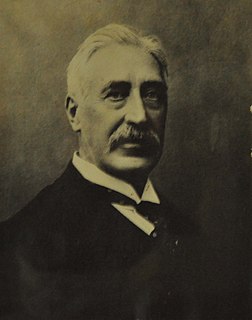
Sir John Eliot was a mathematician and meteorologist who served as the second meteorological reporter to the Indian government, succeeding Henry Francis Blanford. He served as the director-general of Indian observatories from 1899 until his retirement in 1903. He was noted for reorganizing the Indian meteorological department and for his attempts to improve predictions on the monsoons.
Richard Segar Scorer was a British meteorologist. He was a contributor to the theory on mountain waves. Scorer also worked on the cloud physics and his exchanges with the American meteorologist Joanne Simpson helped to better understand the formation of cumulus clouds.
Mavis Kathleen Hinds (1929–2009) was an English meteorologist who, together with Fred Bushby, pioneered the use of computers to carry out meteorological calculations in the UK. She studied Mathematics at University College London (UCL) and on graduating joined the UK Meteorological (Met) Office in 1951, attending their Initial Forecasting Course that year. She went on to work with Bushby in using the Lyons Electronic Office (LEO), an early computer developed by J. Lyons & Co of Cadby Hall, London, becoming an expert in writing, running and correcting computer programs for weather forecasting. She was seen at that time as one of the first prominent female meteorologists and also the first to play a leading role in the development of Numerical Weather Prediction, not only in the UK but also worldwide.